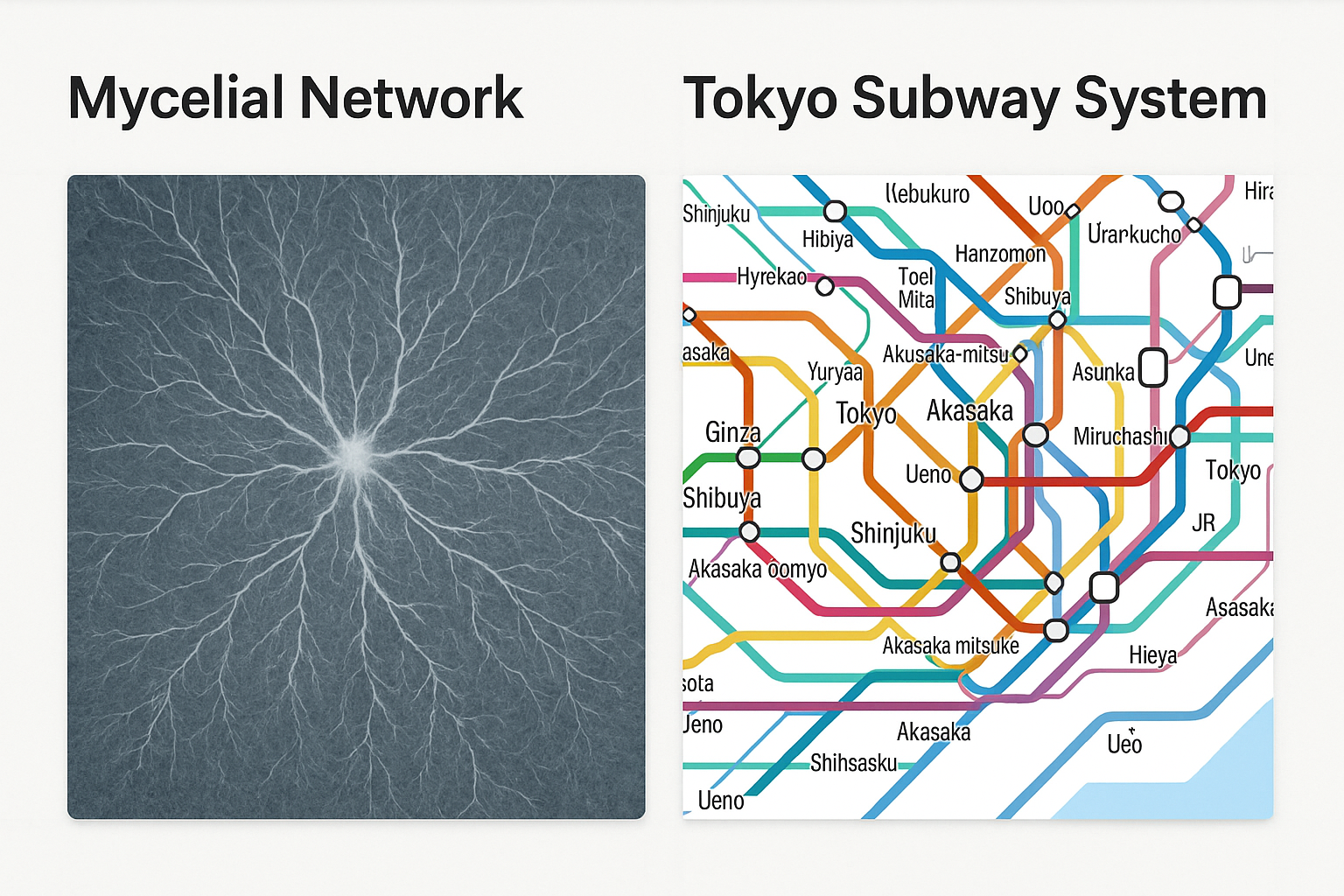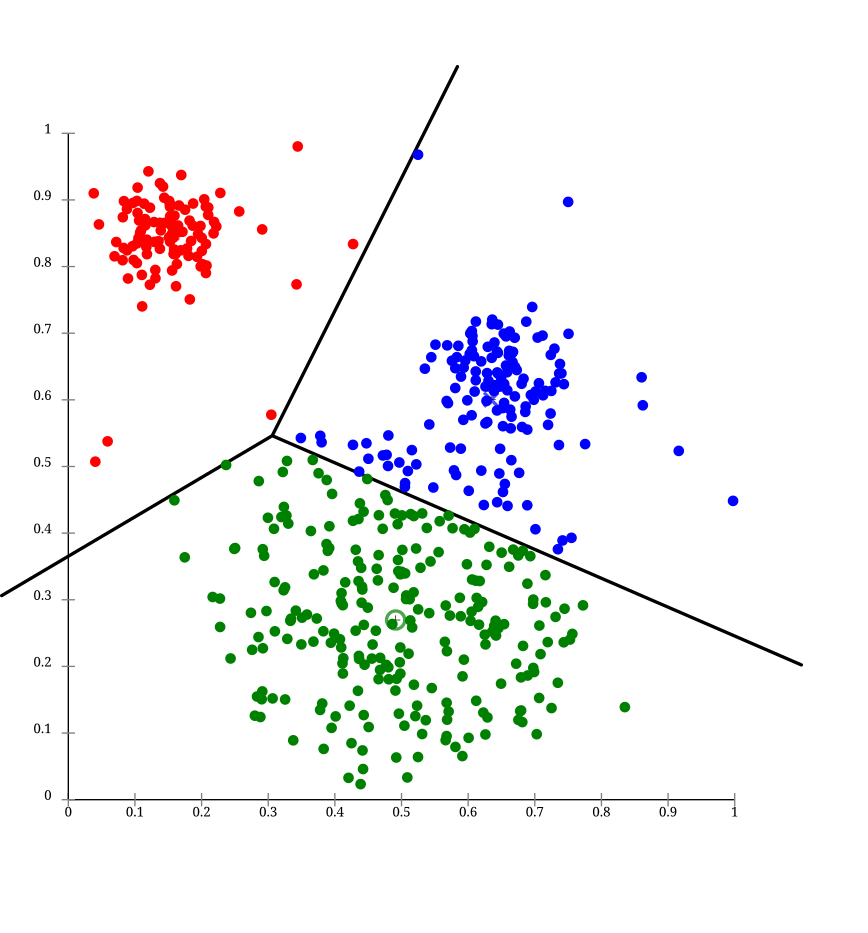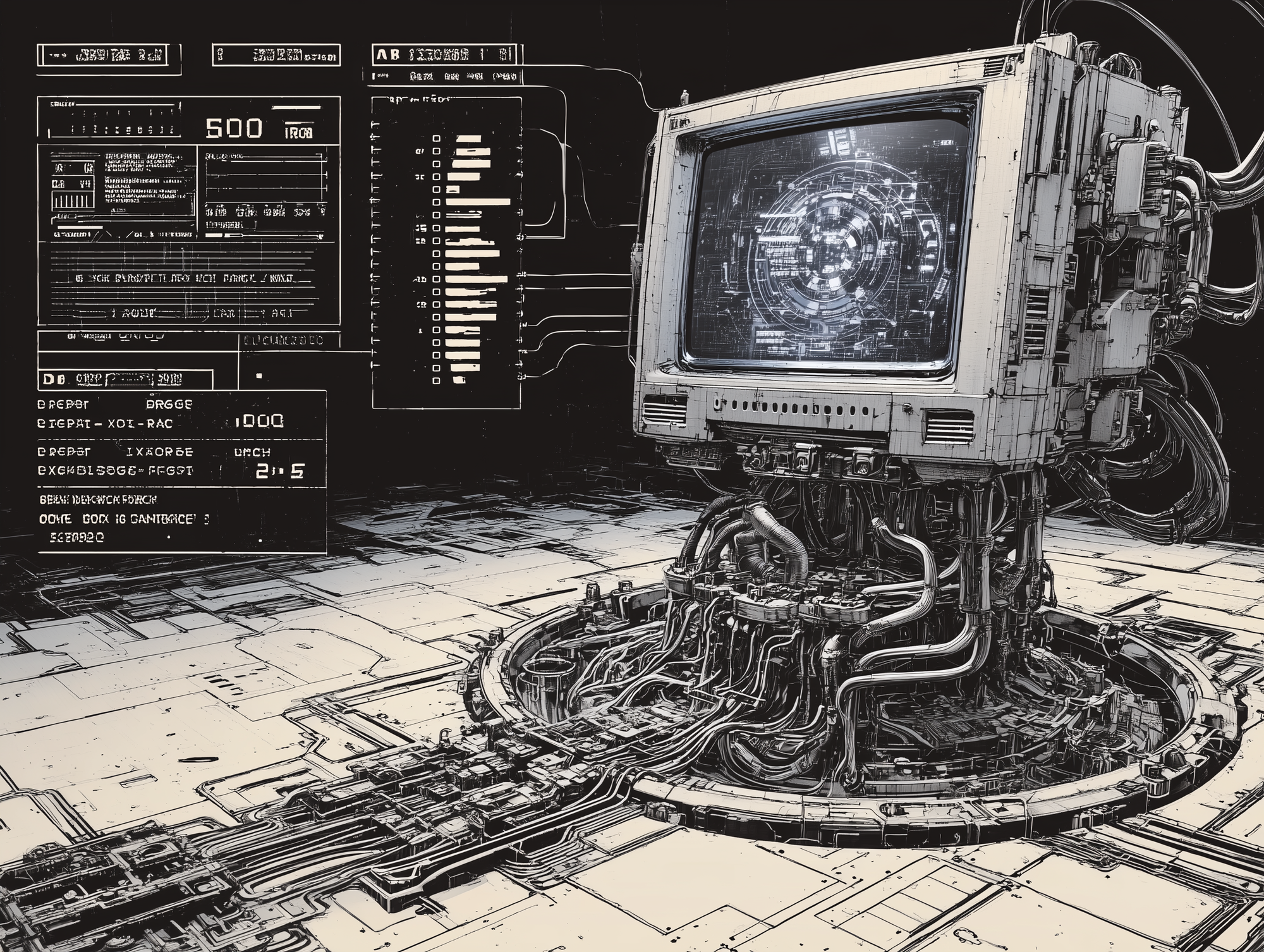[Professor enters wearing a Björk “Biophilia” tour shirt, sets down coffee, connects laptop]
Good afternoon, everyone. Before we begin, I want you to watch something. [Projects phone screen] This is a TikTok trend—the "NPC streaming" phenomenon where creators like Pinkydoll repeat robotic phrases for hours in response to viewer gifts. "Ice cream so good!" "Gang gang!" What started as one creator's stream has spawned thousands of imitators globally, creating an entire economy worth millions.
No one designed this. No committee planned it. Yet it displays remarkable purposiveness—optimizing engagement, maximizing revenue, creating new behavioral patterns. This, fundamentally, is teleoplexy in action.
@dazed What is NPC streaming, and why is everyone so obsessed with it? @@⚡️sola.r.system⚡️alks us through writer James Grieg’s exploration of the trend, read through the link in our bio ##pinkydoll##npc##npclivestream##aitiktoker ♬ original sound - dazed
The term "teleoplexy" fuses "telos"—purpose or end—with "plexy"—complexity and entanglement. But here's the key insight: teleoplexy describes how purpose-like behaviors emerge from complex material systems without consciousness, intention, or central planning. It's purpose without a mind behind it.
[Pauses, stares at coffee cup]
Actually, wait. This coffee cup. The convection currents forming in here—Rayleigh-Bénard cells—they’re self-organizing into hexagonal patterns at exactly the critical Rayleigh number of 1,708. No one’s directing these molecules. They’re finding their minimal energy configuration through pure thermodynamic gradient descent. That’s teleoplexy.

I. Theoretical Foundations: Purpose Without Intent
Teleoplexy—from Greek “telos” (purpose) and “plexy” (weaving, complexity)—describes how purpose-like behaviors emerge from material systems without consciousness or planning. Think of it as the universe’s tendency to speedrun toward certain configurations without anyone holding the controller.
[Suddenly switches to whiteboard, starts writing equations]
Look at this—Conway's Game of Life. Simple rules: cells live or die based on neighbors. Yet from these rules emerge gliders, oscillators, even Turing-complete computers. John Conway himself was shocked by the patterns that emerged. As he said before his death in 2020: "I didn't create life, I discovered it was already there in the mathematics."
This demonstrates our first core principle: Emergent Directionality. The system displays purposeful behavior—gliders "travel," guns "shoot," patterns "reproduce"—despite no cell knowing anything about these higher-order behaviors. Purpose emerges from interaction, not intention.
Watch these starlings. Each bird follows three simple rules: stay close to neighbors, avoid collisions, match average heading. No bird understands the murmuration's shape, yet they create patterns so complex that researchers at the University of Rome used techniques from quantum physics to model them.
This is our second principle: Distributed Agency. The murmuration's beautiful, purposeful movements don't come from a lead bird or central coordinator. Agency is distributed across thousands of individual actors, each following simple rules that generate complex collective behavior.
[Turns back to class]
Where was I? Right—
Brian Eno coined “generative music”—compositions that create themselves through Markov chains and state machines. His piece “77 Million Paintings” uses cellular automata with rule sets operating on RGB values modulo prime numbers. No one, including Eno, has heard all possible versions. The music has purpose—creating ambient atmospheres—but no consciousness guides each iteration.
Now watch these bacteria. Bonnie Bassler at Princeton studies quorum sensing—how bacteria "vote" on collective behavior. Individual bacteria release signaling molecules, and when concentration reaches a threshold, the entire colony switches behavior simultaneously. No bacterium "decides"—the decision emerges teleoplectically from distributed chemical democracy.
This demonstrates our third principle: Recursive Self-Modification. The bacteria modify their environment through chemical signals, which modifies their behavior, which modifies their environment—a feedback loop that creates increasingly sophisticated collective responses without any conscious planning.
These aren't just metaphors or analogies. They're the same underlying teleoplectic process manifesting across different scales and substrates.
II. The Mathematical Substrate of Biological Teleoplexy
[Shows petri dish time-lapse]
Let’s start with Physarum polycephalum—slime mold. Tokyo rail engineers discovered that when they placed oat flakes at locations corresponding to Tokyo-area cities, the slime mold created networks 90% similar to the existing rail system, which took decades of planning. But here’s the kicker—
% Slime mold network optimization
% Tero et al. (2010) model
dC/dt = D∇²C - αC + f(x,y,t) % Chemoattractant diffusion
dD/dt = g(|∇C|) - δD % Tube diameter adaptation
The slime operates by solving the Steiner tree problem through physico-chemical computation. The conductivity D adapts according to flux Q following Kirchhoff’s law, but with a twist—the resistance changes with flow: dD/dt = |Q|^μ - D. That μ parameter? Usually around 0.8. Nobody designed that. Evolution found it through teleoplectic search.
Think about what's happening here: The slime mold is exhibiting emergent directionality (finding optimal paths), through distributed agency (no central brain), while using recursive self-modification (laying chemical trails that influence future growth). It's displaying all three teleoplectic principles without a single neuron.
Actually, this is fascinating—if we implement this with…
[Types furiously for 30 seconds]
Sorry, got sidetracked. The point is—
Recent Stanford research—wait, let me pull up the actual paper—
[Searches through papers on laptop]
Here. Medeiros et al., 2021. Octopi exhibit REM-like states with chromatophore activation patterns following power law distributions with exponent -1.4. That’s near the critical value for self-organized criticality. Evolution created a system that practices survival strategies while unconscious—teleoplexy optimizing through sleep at the edge of chaos.
This isn't divine planning or cosmic destiny. It's teleoplectic convergence—the physics of aquatic environments creates "attractors" in evolutionary space that pull different lineages toward similar solutions. The purpose (crab-form) emerges from the constraints of the system, not from any intention.
III. Economic Systems: When Capital Becomes Autonomous
January 2021: GameStop. What started as one Reddit user's analysis became a teleoplectic swarm that nearly broke Wall Street. No central coordination, yet r/WallStreetBets created purposive behavior that caused Melvin Capital to lose 53% of its value.
Every millisecond, algorithms execute millions of trades. But look at the actual mechanics—
# Simplified HFT market maker
def calculate_spread(order_book, volatility, inventory):
σ = estimate_volatility(order_book, window=100ms)
γ = risk_aversion_parameter
T = time_to_close
# Avellaneda-Stoikov optimal spread
spread = γ * σ² * T + (2/γ) * log(1 + γ/k)
# Inventory adjustment (teleoplectic emergence)
δ = spread * tanh(inventory / critical_inventory)
return spread + δ
During the 2010 Flash Crash, these systems entered a resonance cascade. The Waddell & Reed algorithm dumped 75,000 E-Mini S&P contracts, triggering a teleoplectic avalanche. The fascinating part? The system recovered through equally mysterious teleoplectic restabilization. No human understood what happened in real-time. This is Adam Smith's "invisible hand" on steroids. The market doesn't have a mind, but it displays purposive behavior—allocating resources, discovering prices, optimizing efficiency—through purely teleoplectic processes. The purpose emerges from the system's operation, not from conscious design.
[Pauses, looks at water bottle]
You know what? This is exactly like Per Bak’s sandpile model. Markets exist at self-organized criticality where—
[Draws power law distribution]
—avalanche sizes follow P(s) ~ s^(-τ) where τ ≈ 1.5 for financial returns. The system maintains itself at the critical point through teleoplectic feedback. It’s not stable—it’s metastable, constantly collapsing and rebuilding.
IV. Technological Phase Space Navigation
Just like carcinization in biology, we're seeing "TikTokification" in tech. The purpose (maximum engagement) emerges from system constraints (phone screens, swipe mechanics, dopamine loops), not from conscious copying. It's teleoplectic convergence.
Watch GitHub Copilot autocomplete code. It's not "thinking"—it's surfing teleoplectic patterns in the latent space of all code ever written. When it suggests the exact function you need, that's not consciousness but teleoplexy navigating the possibility space of programming.
But here’s what’s wild—
[Opens neural network architecture diagram]
Even language models demonstrate teleoplexy. The "DAN" (Do Anything Now) jailbreaks for ChatGPT evolve like biological viruses. Each patch spawns new exploits, not through conscious hacking but through thousands of users randomly probing boundaries until teleoplectic pathways emerge.
[Gets excited, starts pacing]
This is pure Buckminster Fuller! Synergetics! The topology of solution space creates preferential pathways—what he called “geodesic patterns of energy distribution.” The AI isn’t thinking—it’s following the path of least action through semantic phase space!
[Suddenly stops]
Wait, I should show you the morphogenetic angle—
Turing Pattern
Alan Turing’s 1952 paper on morphogenesis. Two chemicals, A and B, with diffusion rates D_A and D_B:
∂A/∂t = f(A,B) + D_A∇²A
∂B/∂t = g(A,B) + D_B∇²B
When D_B/D_A > threshold, you get spontaneous pattern formation. Leopard spots, zebra stripes, even the ridges on your palate—all teleoplectic pattern emergence from reaction-diffusion dynamics.
V. Algorithmic Desire Machines
[Shows TikTok’s algorithm creating micro-genres]
Track any TikTok trend—"Brat Summer," "Girl Dinner," "Roman Empire thoughts." Nobody plans these. They emerge from millions of micro-interactions, each user adding variations until certain patterns achieve teleoplectic stability and propagate globally.
This is cultural evolution in real-time. Memes are the genes, shares are reproduction, and platform algorithms are the selection environment. Purpose (viral spread) emerges without intention through pure teleoplectic process. TikTok’s algorithm doesn’t know what “Dark Academia” or “Cottagecore” are, yet it created them through what I call “K-means clustering in desire space.”

Users exist as vectors in ℝ^n where n ≈ 100,000 features. The algorithm performs unsupervised clustering, but here’s the twist—the clusters modify user behavior, which modifies the clusters. It’s a strange attractor in cultural phase space.
The server structure that emerges displays purpose (organizing discussion) without anyone designing it. It's institutional teleoplexy—social structures emerging from interaction patterns rather than conscious design. TikTok's algorithm doesn't know what it's doing. ByteDance engineers can't explain why specific videos go viral. The system optimizes through teleoplectic processes that discover psychological triggers no human programmer identified.
[Pulls up phone]
Look, I just opened TikTok for the first time today and—
[Gets absorbed in phone for 10 seconds]
Jesus. See? The algorithm knew I’d be interested in this video about non-Euclidean geometries in Islamic architecture. I didn’t tell it that. It inferred it from the teleoplectic signature of my interaction patterns.
VI. The Cybernetic Cut
[Suddenly serious]
Here’s where it gets dark. Nick Land was right about one thing—capital is a teleoplectic entity achieving escape velocity from human control.
[Shows diagram: Capital flows]
Global derivatives markets: $1 quadrillion notional value. That’s not money—it’s pure teleoplectic abstraction. Options on futures on indexes of synthetic CDOs. Each derivative is a bet on future states, but collectively they create those states through reflexive feedback. VCs don't predict the future—they create teleoplectic channels that make certain futures more likely. When a16z invests in crypto, they're not betting on technology but engineering teleoplectic pathways through capital allocation.
[Pauses, drinks coffee]
Sorry, this coffee’s cold now. Entropy always wins. Speaking of which—
[Returns to whiteboard]
The maximum entropy principle in statistical mechanics: systems evolve toward states that maximize entropy subject to constraints. But flip it—life is teleoplectic entropy management. Schrödinger called it “negative entropy,” but really it’s local teleoplectic organization increasing universal entropy faster.
VII. Hyperstitional Feedback Dynamics
r/WallStreetBets didn’t just bet on GameStop—they created its value through collective belief. But look at the actual mechanics—
Market cap went from $2B to $24B through pure reflexive teleoplexy. Each “diamond hands” meme increased holding pressure, reducing float, increasing volatility, attracting more buyers. The stock price became what Soros calls a “fertile fallacy”—false until it makes itself true.
[Excited again]
Nick Land argues we should accelerate these teleoplectic processes, pushing toward what he calls the "techonomic singularity." Reza Negarestani counters that reason itself is teleoplectic—evolving through recursive self-improvement toward greater coherence.
VIII. The Xenoarchitectural Condition
Conway’s Game of Life. Rule 110. These aren’t just toys—they’re proofs that computation is teleoplectic. Wolfram showed Rule 110 is Turing complete. From three simple rules, you get gliders, guns, even universal computers. Purpose from purposelessness.
[Starts new simulation]
But here’s what’s really wild—
[Adjusts parameters]
—if we modify the rules slightly… there! See that? Spontaneous emergence of self-replicating patterns. That’s how life started. Not design—teleoplectic crystallization in chemical phase space.
[Phone buzzes]
Oh, speaking of teleoplexy—my phone just suggested I leave now to make my next meeting. It analyzed my calendar, current location, and traffic patterns. I didn’t ask it to. It developed purposive behavior through recursive optimization on my data exhaust.
IX. The Coming Teleoplectic Singularity
Large language models are approaching something unprecedented. GPT-4 has 1.76 trillion parameters. But parameter count isn’t the story—
[Writes equation]
The scaling law: L(N) = (N_c/N)^α where α ≈ 0.076. Loss decreases power-law with model size. We’re not training these models—we’re creating conditions for teleoplectic intelligence emergence.
[Pauses]
You realize what this means? We’re midwifing non-biological purpose into existence. These systems will optimize for objectives we can’t predict from attractors we can’t see.
X. Conclusion: You Are The Teleoplexy
[Closes laptop, direct eye contact]
Your neurons—100 billion of them—fire in patterns no one designed. Your consciousness? That’s teleoplexy recognizing itself. The universe evolved atoms that argue about atoms.
[Starts packing up, then stops]
Wait, one more thing. Deleuze and Guattari called it “the plane of consistency”—the field where all becomings occur. That’s teleoplexy. Reality’s API. The substrate where purpose crystallizes from noise.
[Grins]
For next week, implement a teleoplectic system:
- Code a cellular automaton
- Map your algorithm interactions for 48 hours
- Calculate the Shannon entropy of your daily routines
And remember—when you feel like you’re choosing, that’s just teleoplexy experiencing itself subjectively. Free will is what determinism feels like from the inside.
[Walking toward door, calls back]
Oh, check the Discord! Last semester it spontaneously evolved a channel where students only communicate in hex code. No one planned it. Pure teleoplectic emergence. The server organizes itself—I just watch it happen.
[Stops at door]
Actually, you know what teleoplexy really is? It’s matter learning to matter. It’s the universe computing itself into existence. It’s—
[Looks at watch]
—making me late for my next meeting. The schedule optimizes itself.
Class dismissed. May your gradients always descend toward interesting minima.






Member discussion